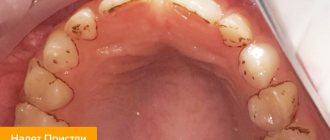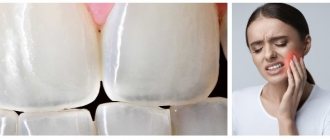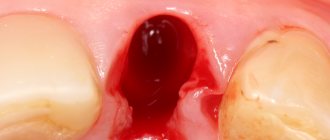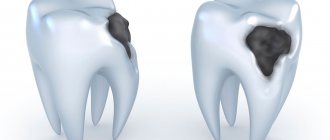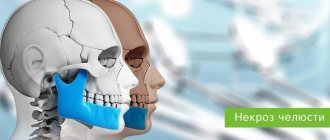By length
This is a classification according to Kurlyandsky. According to this criterion, pathology is divided into the following types:
- Localized. Individual units or groups of them are erased. It is diagnosed mainly from the front side, for example, with a deep bite. Local compensation occurs due to the appearance of a hypertrophied alveolar process.
- Generalized. All rows are involved, the height of the bite changes significantly. Whether abrasion will be compensated by the body is determined by its individual characteristics.
Complications
What to do if teeth are worn out depends on the provoking factors. As discussed above, the lack of timely therapy leads to cosmetic defects and disruption of the chewing process. In addition, there are other consequences that affect the quality of life of patients:
- inflammation of the gums in the interdental spaces;
- gingivitis;
- diseases of the temporomandibular joint;
- loss of teeth;
- damage to nerve fibers and muscle tissue;
- uneven load distribution leading to traumatic articulation;
- malocclusion.
Stages of caries treatment
Once dental caries is diagnosed, the doctor begins to treat it. It consists of a series of successive stages:
- Hygienic treatment. The tooth is cleaned of soft and hard deposits.
- Introduction of anesthetic. The painkiller is administered through a puncture in the gum.
- Preparation. Using a drill, the doctor removes all damaged tissue and creates a cavity.
- Washing. The remains of the removed tissue are thoroughly washed off with a stream of water and air.
- Tooth isolation. It is carried out in order to prevent saliva from entering the work area, as well as to protect the mucous membranes of the cheeks and lips.
- Medicinal treatment. Antiseptic solutions are used, after which the tooth is thoroughly dried.
- Preparation for filling. The dentist etches the cavity with acid and applies an adhesive gel.
- Gasket application. Used in the treatment of deep caries, to protect the pulp.
- Filling. The cavity is filled layer by layer with filling material. The restored surface is then ground and polished.
Diagnostics
Most people aged 50 years and older experience the physiological type of abrasion. The doctor needs to determine in time when the natural process turns into a pathological one. One of the main methods remains measuring the actual parameters of crowns. In addition, it is important to carefully study the shape of the dental units and determine areas of contact with antagonists. The height of the coronal part is compared with age standards established scientifically.
Diagnostic measures include assessment of fissures and enamel condition. The doctor pays attention to the patient’s facial expressions and appearance. It is important to talk in detail about your complaints and describe your feelings.
To assess how correctly the temporomandibular joint functions, electromyography is indicated. X-ray examination, electroodontodiagnosis and other procedures are carried out.
Types of caries
The pathological process spreads gradually. Depending on the depth of tissue damage, caries is divided into:
- Elementary. This is the so-called spot stage. An area of demineralization is visible on the enamel, the color of which has changed.
- Surface. The damage spreads deeper. The stain becomes rough, but the destructive process does not yet go beyond the enamel.
- Average. A darkened cavity is clearly visible in the tooth; destruction affects the upper layers of dentin.
- Deep. The bottom of the carious cavity descends almost to the pulp chamber, which is protected only by a thin layer of dentin.
Treatment and price depend primarily on the depth of spread of dental caries. The larger the destructive process, the more materials and preparations are required to restore the tooth, as well as the time and effort of the doctor.
Caries is also classified according to the location of the lesion:
- Fissure. The destructive process is localized on the chewing surfaces.
- Contact. The lateral areas of the teeth touching each other are affected.
- Cervical. Caries develops at the border of the crown and root.
In addition, caries can be single, multiple and systemic, and also occur quickly, slowly or stabilize for some time.
Treatment in dentistry
To eliminate pathological abrasion of hard dental tissues, you need to establish its cause and then get rid of it. The next step is to restore the configuration of the dentition. In the early stages, treatment with medications may be sufficient. If the symptoms are pronounced, only an orthopedist will help.
Medicines
The techniques used are based on the process of remineralization of the enamel layer. In this way, compensatory reactions are activated and mineral metabolism in hard tissues is normalized. Experts prescribe vitamin and mineral supplements with a high content of calcium and phosphorus. Additionally, pastes are used to reduce sensitivity. If the destruction has just begun and the dentin has not been damaged, this option for treating tooth wear can be very effective.
Orthopedic methods
If the defect is serious, medication alone is not enough; more radical correction is required. Most often, doctors use inlays and artificial crowns. If some units fall out, a bridge structure, clasp prosthesis or other types are installed. This therapy allows you to completely restore the functioning of the rows and evenly distribute the chewing load.
Causes of caries
According to statistics, caries treatment in Moscow is carried out daily for tens of thousands of patients. And this is not surprising, because dental diseases are second only to colds in terms of prevalence in the world.
Scientists name different reasons for the development of caries. These include poor oral hygiene, lack of vitamins and minerals in the diet, and low immunity. But one of the main factors that, in fact, triggers the carious process is the consumption of sugar-containing foods. In this case, the following processes occur:
- the number of cariogenic bacteria in the oral cavity increases many times;
- pathogenic microorganisms ferment sugar, resulting in the formation of acid;
- Tooth enamel dissolves or demineralizes under acidic influence.
Thus, every time a person consumes “empty” carbohydrates or sugar, he feeds the caries bacteria. They form plaque on the enamel. It is in these areas that, under the influence of acid, first the enamel and then the dentin are destroyed.
Prevention
To prevent pathology, it is necessary to regularly visit the dentist for preventive examinations at least once every six months. It is also important to promptly replace dental defects. In addition, all experts advise correcting malocclusion pathologies in a timely manner already in childhood or adolescence. Orthodontic therapy will help cope with the abnormal position of the teeth and prevent wear of the crown part.
You won’t have to decide what to do when the hard tissues of your teeth are worn away if you treat all the diseases that lead to it. For example, this includes bruxism, mineral metabolism disorders, thyroid pathologies, and problems with the digestive organs.
If the patient is at risk due to professional activities, it is necessary:
- use personal protective equipment;
- take a responsible approach to regular hygienic oral care;
- take courses of vitamins and minerals prescribed by your doctor.
The most important point remains the qualitative diagnosis of the transitional stage between physiological and pathological erasure. For this purpose, regular examinations and timely treatment of identified disorders are indicated.
How to deal with tooth wear
For many patients, tooth wear is not a problem at all - until it begins to be accompanied by painful sensations. They have no idea that the process of destruction of enamel and dentin is irreversible, and the sooner it is detected, the higher the chance of at least slowing down its inevitable progression.
Measures to combat tooth wear should be comprehensive:
- Treat your gums and teeth in a timely manner: be sure to monitor the condition of all teeth and gums so that, if necessary, you can consult a doctor as quickly as possible for appropriate treatment of caries or other common diseases;
- regularly saturate tooth enamel with nutrients and minerals : for this purpose, apply special medications to it; you can also use protective mouth guards with vitamins, minerals and gels placed inside;
- correct the malocclusion: to change the incorrect position of several teeth, for example, “located” on top of each other and causing destruction of the enamel at the point of their contact, contact an orthodontist and take a course to correct the bite using braces;
- undergo treatment for bruxism: in the absence of pressure on the teeth, their condition will improve significantly, which is why it is so important to use protective mouthguards at night to reduce the load on the teeth due to clenching of the jaws, and also try to eliminate stressful situations;
- restore lost teeth: aesthetic dentistry will reduce the load on the remaining ones, the dentist will suggest you use a bridge, removable structure or dental implantation;
- Consult your doctor to have your dentures adjusted: Be sure to consult with your dentist and, if necessary, replace the old denture with a new one or allow a dental prosthetic specialist to adjust the position of the metal elements of the denture to reduce pressure on the enamel.
People working in hazardous industries are advised to change jobs if this negatively affects the condition of their teeth and the body as a whole. To restore the aesthetics of the dentition, today they use veneers and lumineers (the so-called thin ceramic linings that are fixed on the front surface of the teeth), or the familiar dental crowns, which allow, to a greater or lesser extent, to restore the visible part of the tooth above the gum.
Quick appointment Free consultation
Let's sum it up
What to do if the lower front teeth or upper teeth are worn out, pain and other unpleasant symptoms appear? First of all, you need to go to the dentist to conduct a thorough diagnosis and identify the exact causes of the pathology. The longer the patient ignores the presenting signs, the more severe the consequences for him. In order not to encounter this phenomenon, it is necessary to take preventive measures, especially for those at risk.
Sometimes the enamel wears away due to age-related changes. In this case we are talking about a natural process. Which group should the problem be classified into, and whether treatment should be prescribed, should be decided solely by the doctor.
Symptoms of caries
In some cases, only a specialist can detect the very first signs of carious enamel damage. For this, special diagnostic methods are used that help differentiate this disease from dysplasia and fluorosis, as well as identify damage to contact surfaces.
However, there are a number of signs by which a patient can understand that he clearly needs treatment for dental caries. These are the symptoms:
- the appearance of a dull white or dark spot on the enamel or a general change in its color;
- formation of a black dot on the surface of the crown;
- increased tooth sensitivity, in particular pain reaction to temperature stimuli and sweets;
- discomfort and pain when chewing or pressing on the crown;
- the appearance of bad breath in combination with the formation of cavities in the teeth.
The mucous membranes around a carious tooth, as a rule, are not changed, and the pain subsides after the irritant is eliminated. But without treatment, microorganisms penetrate the pulp, and then more severe symptoms appear.

